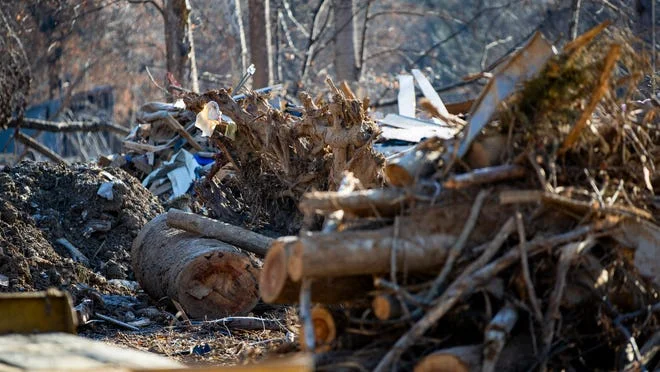
Storm Recovery Efforts Unveil Dangers to Endangered Wildlife in North Carolina
In the wake of Hurricane Helene, North Carolina is grappling with the dual challenge of debris cleanup and protecting its endangered species. While the debris removal is essential to mitigate flooding risks, it has posed unforeseen threats to delicate ecosystems, particularly in regions like the Little River.
The situation has escalated into an ecological crisis due to the heavy machinery used in clean-up efforts. Contractors, many from out of state, directed by the U.S. Army Corps of Engineers, have been utilizing heavy equipment in sensitive aquatic environments. This approach, now under scrutiny, has resulted in damaged mussel beds and disrupted habitats for critically endangered species such as the Appalachian Elktoe and the Long-Solid Mussel.

Freshwater mussels, often overlooked in the conservation dialogue, play a vital role as natural water filters in river ecosystems. However, they are also highly sensitive to disturbances. The current debris removal operations threaten their survival, particularly as mussels are crushed or displaced, cutting off their access to food and oxygen.
In addition to mussels, the habitat of the hellbender salamander—a large aquatic salamander already endangered—faces destruction from the same cleanup activities. This creates a no-win situation; the very measures intended to restore safety and minimize flooding inadvertently compromise the survival of these rare species.
According to Margie Huggins, a local landowner, effective collaboration between agencies is crucial. Huggins, whose family has cultivated the land along the Little River for generations, advocates for a balanced approach that preserves critical habitats while still addressing the need for debris removal. "It's vital to find a balance in leaving certain areas in critical habitat less disturbed," she emphasized.
Adding to the complexity, communication breakdowns between federal and local agencies have been noted as a significant issue preventing timely action and awareness around sensitive habitats. This poor coordination may lead to irreparable damage to mussel beds and the hellbender's resilience—even a single season of disturbance could take years to recover from.
To adequately protect these vulnerable aquatic ecosystems, organizations like Conserving Carolina have emphasized the need for an improved dialogue among contractors, state, and local resource agencies. This cooperation is vital for identifying critical habitats and prioritizing the protection of sensitive species ahead of cleanup tasks.
As North Carolina continues to address the aftermath of Hurricane Helene, a pressing question looms: How can future cleanup initiatives ensure the safeguarding of endangered wildlife while promoting community safety? We invite our readers to share their thoughts and insights on this challenging balance. How do you believe we can support both ecological integrity and disaster recovery effectively?